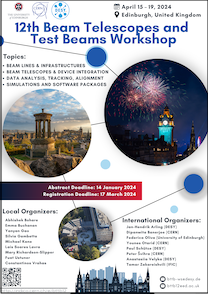Speaker
Description
Particle physics requires new detector technologies for experiments beyond the HL-LHC. This relies on access to facilities for irradiation and characterisation in detector development. A key characterisation facility is provision of a GeV particles (electrons/pions) test-beam passed through a telescope to measure key performance metrics of detectors (such as detection efficiency, spatial and timing resolutions). Such facilities exist at a handful of international laboratories and access to these is often oversubscribed (CERN, DESY and SLAC). In this work we propose the development of a pilot beamline and test-beam telescope at the Scottish Centre for the Application of Plasma-based Accelerators (SCAPA) at Strathclyde University. We propose to produce a working 2 GeV electron beamline based on a laser-driven accelerator for use by the particle and nuclear physics communities, which would accelerate detector development for future experiments, and enable the development of a design for a second phase beamline at higher energies (4 GeV) and higher repetition rates (10 Hz). The project will also develop an ultra-low mass beam telescope with picosecond timing resolution, usable with the 2 GeV beams. Monolithic CMOS and back thinned TimePix4 detector planes will be investigated for the beam telescope. Here we will discuss the proposed facility, its advantages and limitations, and beam telescope options to gauge interest from the community.
